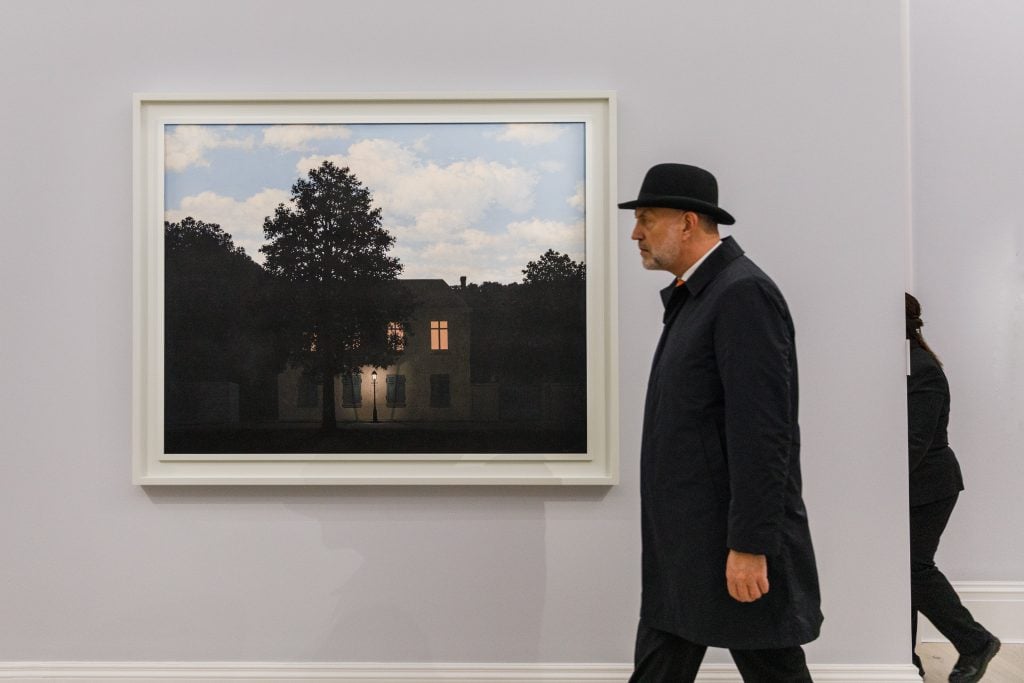Art World
Art Bites: Surrealist Painter René Magritte Was a Master Forger, Too
Not only did he create fakes of artists such as Titian and Picasso, he also forged 100-franc bills.

Not only did he create fakes of artists such as Titian and Picasso, he also forged 100-franc bills.

Brian Boucher

It’s one of Modern art’s most famous images: a pipe, above the words “Ceci n’est pas une pipe,” or “This is not a pipe,” and it’s called The Treachery of Images (1929).
If you know the Belgian surrealist René Magritte for one thing, it’s probably this canvas. You probably also know his anonymous bowler-hatted men, as well as other masterpieces, like the paintings titled L’empire des lumières (which he created from the ’40s through the ’60s), which show a brightly shining sky above a dusky street, or The Lovers (1928), which shows a man and woman kissing, their heads wrapped in fabric. (That canvas made the rounds as a meme during the height of the Covid pandemic, when masks were de rigueur.)
But what you may not know is that the beloved surrealist was also a master forger, not only of artworks but even of paper money.
It’s not an urban legend: his close friend, artist Marcel Mariën, revealed the act in his 1983 autobiography (Magritte’s wife sued, but she lost). During the Nazi occupation, old masters like Titian as well as moderns like Pablo Picasso, Max Ernst, and Giorgio de Chirico came in for copying by Magritte; Mariën was charged with selling the fakes to collectors. It’s not entirely clear whether he did this as part of a philosophical program to challenge authority or whether he just needed to make a living.
In the lean years after the war, Magritte and his brother even forged 100-franc notes.
He wouldn’t have to print fake money for too long. He went on to see great success, with collectors like Nelson Rockefeller snatching up his paintings, and he had a major retrospective at New York’s Museum of Modern Art in 1965, after which his prices shot up.
His fame has only grown, with his works appearing not only from museum walls to dorm-room posters, but also, recently, making a smash appearance on the auction block. The artist blew past his public sale record at Sotheby’s London in 2022, when his 1961 canvas L’empire des lumières fetched $79.8 million, far exceeding his previous high of $26.8 million.
The idea of an artist committing fraudulent acts like forgery while wearing a suit, tie, and bowler hat, and living the married, suburban life, may seem incongruous. But if you ask critic George Melly, it all makes sense: “He is a secret agent,” Melly has said. “His object [is] to bring into disrepute the whole apparatus of bourgeois reality. Like all saboteurs, he avoids detection by dressing and behaving just like everybody else.”